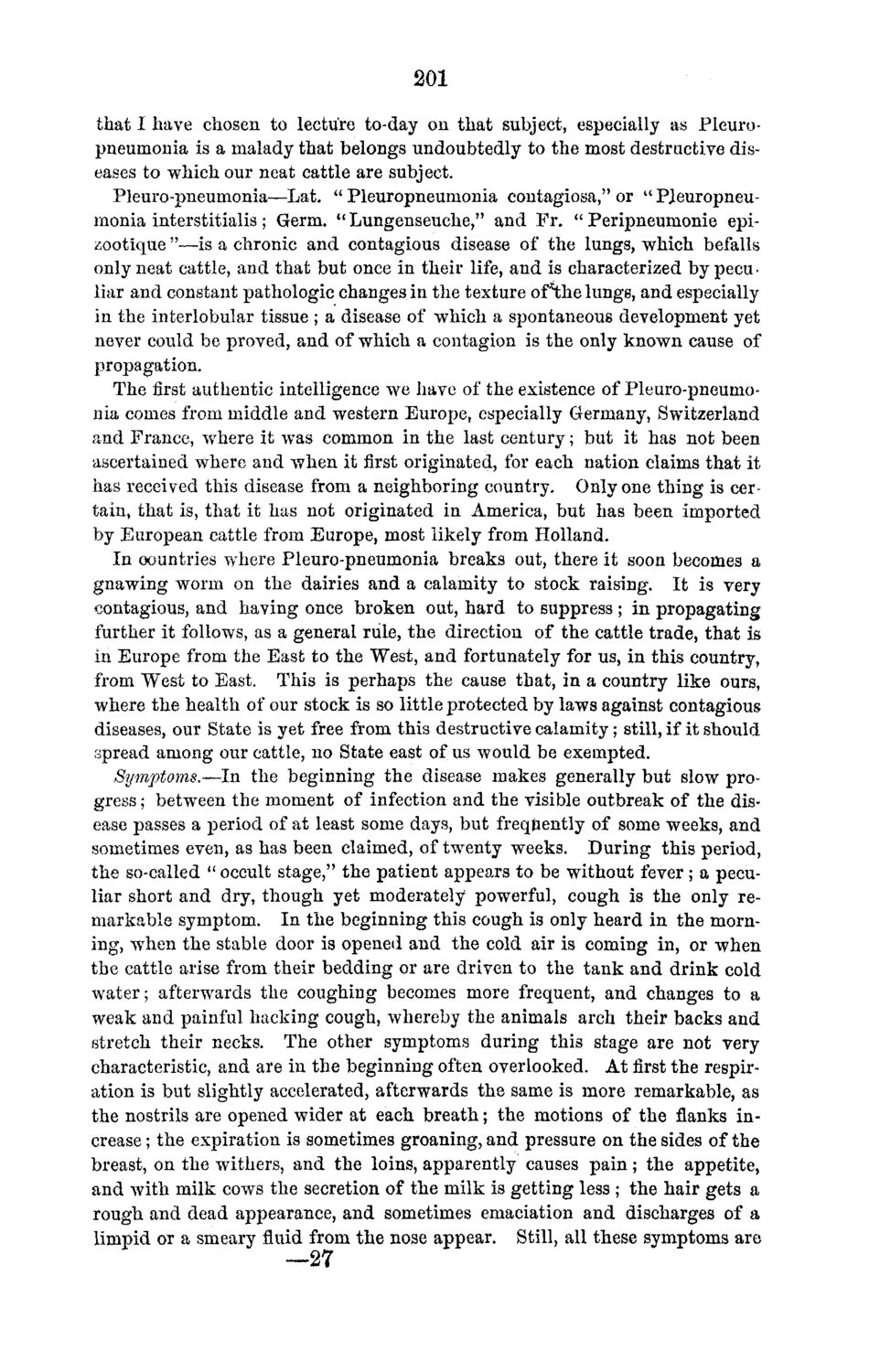| |
| |
Caption: Board of Trustees Minutes - 1870
This is a reduced-resolution page image for fast online browsing.

EXTRACTED TEXT FROM PAGE:
201 that I have chosen to lecture to-day on that subject, especially as Pleuropneumonia is a malady that belongs undoubtedly to the most destructive diseases to which our neat cattle are subject. Pleuro-pneumonia—Lat. " Pleuropneumonia contagiosa," or " Pleuropneumonia interstitialis; Germ. " Lungenseuche," and Fi\ " Peripneumonie epizootique "—is a chronic and contagious disease of the lungs, which befalls only neat cattle, and that but once in their life, and is characterized by peculiar and constant pathologic changes in the texture of*the lungs, and especially in the interlobular tissue ; a disease of which a spontaneous development yet never could be proved, and of which a contagion is the only known cause of propagation. The first authentic intelligence we have of the existence of Pleuro-pneumonia comes from middle and western Europe, especially Germany, Switzerland and France, where it was common in the last century; but it has not been ascertained where and when it first originated, for each nation claims that it has received this disease from a neighboring country. Only one thing is certain, that is, that it has not originated in America, but has been imported by European cattle from Europe, most likely from Holland. In countries where Pleuro-pneumonia breaks out, there it soon becomes a gnawing worm on the dairies and a calamity to stock raising. It is very contagious, and having once broken out, hard to suppress; in propagating further it follows, as a general rule, the direction of the cattle trade, that is in Europe from the East to the West, and fortunately for us, in this country, from West to East. This is perhaps the cause that, in a country like ours, where the health of our stock is so little 23rotected by laws against contagious diseases, our State is yet free from this destructive calamity; still, if it should spread among our cattle, no State east of us would be exempted. Symptoms.—In the beginning the disease makes generally but slow progress ; between the moment of infection and the visible outbreak of the disease passes a period of at least some days, but frequently of some weeks, and sometimes even, as has been claimed, of twenty weeks. During this period, the so-called " occult stage," the patient appears to be without fever; a peculiar short and dry, though yet moderately powerful, cough is the only remarkable symptom. In the beginning this cough is only heard in the morning, when the stable door is opened and the cold air is coming in, or when the cattle arise from their bedding or are driven to the tank and drink cold water; afterwards the coughing becomes more frequent, and changes to a weak and painful hacking cough, whereby the animals arch their backs and stretch their necks. The other symptoms during this stage are not very characteristic, and are in the beginning often overlooked. At first the respiration is but slightly accelerated, afterwards the same is more remarkable, as the nostrils are opened wider at each breath; the motions of the flanks increase ; the expiration is sometimes groaning, and pressure on the sides of the breast, on the withers, and the loins, apparently causes pain; the appetite, and with milk cows the secretion of the milk is getting less ; the hair gets a rough and dead appearance, and sometimes emaciation and discharges of a limpid or a smeary fluid from the nose appear. Still, all these symptoms are —27
| |